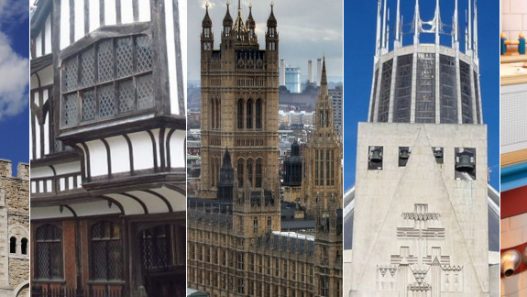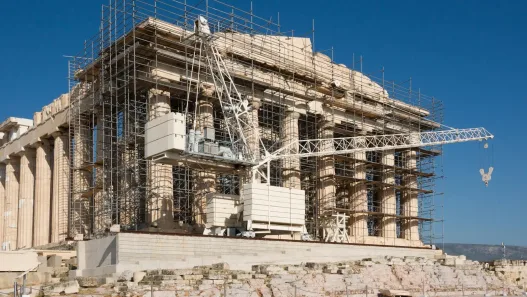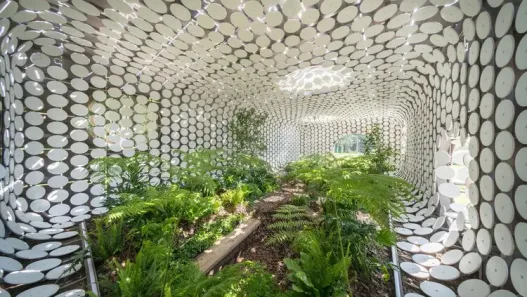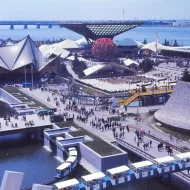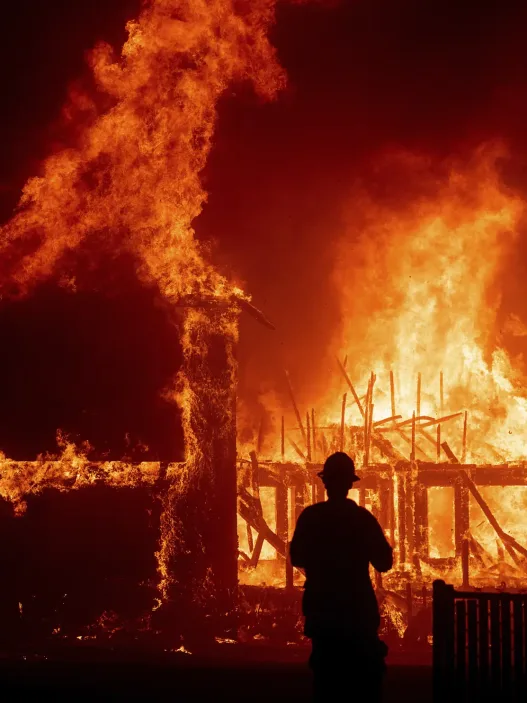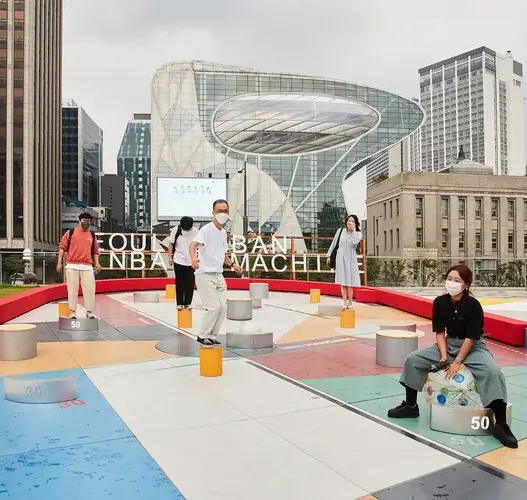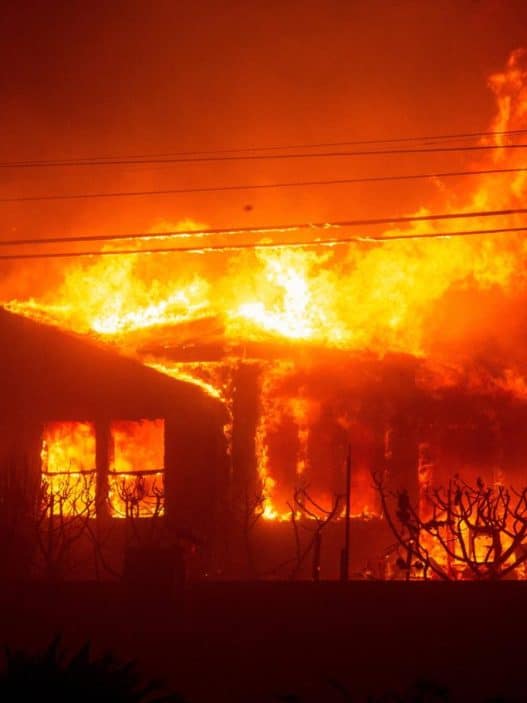Post-disaster urban renewal is a vital process that aims to rebuild and revitalize areas that have been significantly damaged by natural or man-made disasters. This transformative journey aims not only to restore physical structures, but also to re-establish community bonds, increase resilience, and improve the overall quality of life of residents. To understand this concept, it is necessary to examine its definition, historical context, the important role that architecture plays in recovery, the nature of architectural competitions, and the overarching goals of exploring this topic.
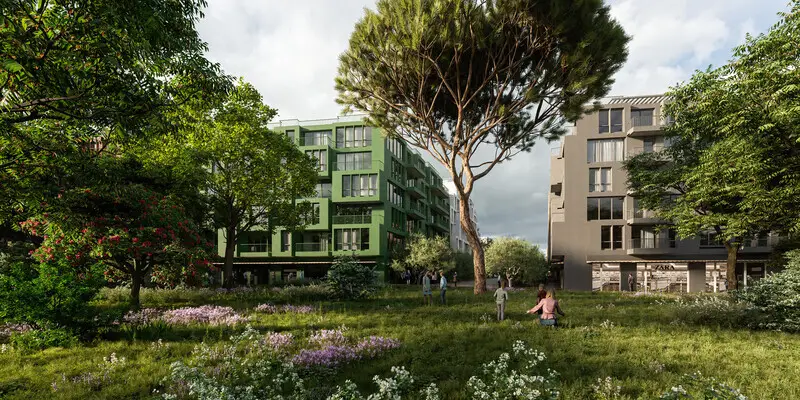
Definition of Urban Renewal
Urban renewal refers to the comprehensive approach adopted for the revitalization of urban areas that have fallen into disrepair or have been devastated by disasters. This process encompasses a range of activities from infrastructure repair and housing development to the creation of public spaces that encourage community participation. It is a holistic effort that integrates social, economic and environmental considerations, aiming to create vibrant and livable environments. In the context of post-disaster scenarios, urban renewal becomes an opportunity not only to rebuild, but also to renew and improve old systems and designs.
Historical Context of Disasters
Throughout history, cities have faced a variety of disasters, from earthquakes to floods, wars to industrial accidents. Each event has left its mark, reshaping urban landscapes and communities. For example, the Great Chicago Fire led to significant changes in building codes and urban planning practices. Similarly, the devastation caused by Hurricane Katrina led to a reevaluation of disaster preparedness and response strategies. These historical events highlight the cyclical nature of destruction and renewal, emphasizing that while disasters cause loss, they also provide unique opportunities for growth and redesign of urban environments.
The Importance of Architecture in Improvement
Architecture plays a crucial role in the recovery process after a disaster. It’s not just about rebuilding buildings; it’s about creating spaces that reflect the identity, needs, and desires of a community. Carefully designed buildings and public spaces can foster social cohesion, support economic activity, and increase safety from future disasters. For example, the rebuilding efforts in New Orleans after Hurricane Katrina included not just homes, but also parks and community centers that aimed to bring back the spirit of the city. In this way, architecture can act as a bridge between the past and the future, allowing communities to heal while preparing for resilience.
Overview of Architectural Competitions
Architecture competitions are platforms that invite architects, designers, and urban planners to propose innovative solutions to specific challenges, including those resulting from disasters. These competitions encourage creativity and new ideas, and often lead to groundbreaking designs that prioritize sustainability, functionality, and aesthetics. They provide a space for diverse voices and perspectives, ensuring that the resulting plans are inclusive and consider the needs of a variety of stakeholders. A successful example is the competition for the reconstruction of Port-au-Prince, Haiti, after the earthquake, which sought innovative designs that would increase resilience and community participation.
Architectural competitions have emerged as powerful tools in the field of post-disaster urban renewal. These events not only stimulate new ideas, they also engage communities and attract talent from around the world. In the wake of disasters, cities often face the daunting task of rebuilding, and competitions can provide innovative pathways to recovery. This research examines the multifaceted role of architectural competitions, highlighting their ability to foster creativity, community engagement, and global collaboration.
The Role of Architectural Competitions
Architecture competitions serve as dynamic platforms for generating innovative ideas and solutions to complex urban problems, especially in the aftermath of disasters. By inviting architects, designers, and urban planners to contribute their visions, they encourage a broad range of perspectives that can lead to groundbreaking approaches to rebuilding efforts.
Promoting Innovative Solutions
One of the most important contributions of architectural competitions is their ability to foster innovation. When cities are rebuilding after a disaster, traditional methods may not be enough. Competitions challenge participants to think outside the box and propose new solutions that address not only the physical rebuilding of structures but also the social and emotional needs of the community. For example, after Hurricane Katrina devastated New Orleans, competitions led to unique housing designs that prioritized sustainability and resilience, integrating green space and community resources into the fabric of recovery.
Interaction with Society
Community participation is a crucial aspect of disaster recovery. Architectural competitions often involve local stakeholders in the design process, ensuring that residents’ voices are heard and considered. This participation fosters a sense of ownership and pride among community members as they become active participants in shaping their environment. Following the earthquake in Japan, competitions have helped foster community dialogue, creating designs that reflect the cultural heritage and needs of affected residents. This collaborative approach not only increases the relevance of proposed solutions, but also builds trust and solidarity within the community.
Attracting Global Talent
In an increasingly connected world, architectural competitions have the power to attract talent from across the globe. By inviting international participants, cities can tap into a wealth of creativity and expertise that may not be available locally. This flow of ideas often results in a diverse and rich range of proposals that can transform the rebuilding process. The post-earthquake rebuilding of Christchurch, New Zealand, is a notable example of how international competitions have attracted innovative architects and planners, resulting in revitalized public spaces and modern infrastructure that reflect both local and global influences.
Creating Public Interest
Architectural competitions also serve to generate public interest and dialogue about urban renewal. By drawing attention to the challenges faced by disaster-affected areas, these events can inspire broader conversations about resilience, sustainability, and community well-being. Public displays of submitted work allow for community feedback and participation, making the rebuilding process transparent and inclusive. For example, the design competition for the redevelopment of Lower Manhattan after 9/11 not only showcased visionary concepts, but also engaged the public in discussions about memorialization, urban design, and future-proofing.
Case Studies of Successful Competitions
There are several case studies that demonstrate the effectiveness of architectural competitions in promoting post-disaster urban renewal. For example, the ‘Rebuild by Design’ initiative in the United States was launched in response to Hurricane Sandy. This competition brought together multidisciplinary teams to address vulnerabilities in coastal cities, resulting in innovative designs that prioritized flood resilience and community engagement. Similarly, the ‘Rising from the Ashes’ competition in Fort McMurray, Canada, challenged architects to envision a sustainable future for the community following devastating wildfires. The winning designs focused not only on rebuilding homes, but also emphasized the importance of creating vibrant public spaces that foster social interaction.
Ultimately, architectural competitions are much more than design competitions; they are vital catalysts for post-disaster urban renewal. By encouraging innovative solutions, engaging communities, attracting global talent and capturing public interest, these competitions play a key role in shaping resilient, inclusive and sustainable urban environments. As cities continue to grapple with the impacts of disasters, the lessons learned from these competitions will undoubtedly inform future rebuilding efforts and ensure that communities emerge stronger and more integrated than before.
Architecture competitions are a powerful tool for developing innovative solutions to complex challenges posed by disasters. When cities face devastating events like hurricanes, earthquakes, or tsunamis, these competitions can mobilize designers, architects, and planners to reimagine urban landscapes. The post-disaster phase often requires not only rebuilding structures, but also revitalizing communities and increasing resilience. By examining notable case studies, we can better understand how these competitions shape recovery efforts and offer lessons for future resilience.
Case Studies of Notable Post-Disaster Competitions
Rebuilding New Orleans
The devastation of New Orleans following Hurricane Katrina led to a series of architectural competitions aimed at rethinking the city's future. One of the most notable of these, "Rebuilding Together: New Orleans," invited architects to propose holistic solutions that integrated housing, infrastructure, and community spaces.
Participants were asked to address both the immediate needs of displaced residents and the long-term sustainability of the city. The winning designs reflected a commitment to social equity by emphasizing mixed-use developments, green space, and community inclusion. The competition sought not only to provide physical shelter, but also to restore the cultural identity that makes New Orleans unique. As the city rebuilds, these designs influenced policy and funding, ultimately leading to a more resilient urban fabric that embraces its heritage.
Reconstruction After the Haiti Earthquake
The devastating earthquake in Haiti in January left thousands homeless and devastated the country’s fragile infrastructure, giving rise to competitions such as the “Rebuild Haiti” initiative that focus on innovative, sustainable rebuilding strategies.
Architects and planners from around the world proposed designs that prioritized local materials, community involvement, and disaster resilience. One prominent proposal included modular housing units that could be quickly assembled and adapted to local needs. This approach not only provided immediate relief, but also fostered a sense of ownership among residents. The competition emphasized the importance of drawing on local knowledge and resources, paving the way for a collaborative rebuilding process that continues to influence urban planning in Haiti today.
Christchurch Rebuilding Project
After the earthquakes that hit Christchurch, New Zealand in 2011, the city was faced with the monumental task of rebuilding its city centre. Competitions such as the “Re:START” project aimed to revitalize the central business district while incorporating modern urban design principles.
One of the key outcomes of this competition was the creation of a temporary shopping centre made from shipping containers. This innovative solution enabled planners to develop long-term strategies for the area, while also boosting the economy. By highlighting the importance of public space and community centres, the competition transformed Christchurch into a vibrant city that honours its past while embracing modernity. The lessons learned from this process have shown how adaptive reuse and creativity can lead to successful urban regeneration.
Post-Tsunami Studies in Japan
The tsunami that devastated parts of Japan prompted a rapid response from architects and planners, leading to several competitions aimed at rebuilding affected coastal towns. The "Reconstruction Design Competition" focused on creating resilient infrastructure designed to withstand future disasters.
Proposals ranged from elevated buildings to comprehensive urban planning strategies that integrated natural barriers. One notable entry showcased innovative thinking about climate resilience by proposing a series of floating homes that could rise with the water level. These competitions not only addressed urgent rebuilding needs, but also stimulated public discussion about disaster preparedness and sustainable living. The results have influenced policy and community planning across Japan, promoting a culture of resilience that goes beyond physical structures.
Lessons Learned from Each Example
Case studies from New Orleans, Haiti, Christchurch, and Japan demonstrate the transformative power of architectural competitions in post-disaster contexts. Each example highlights a common theme: the need for community engagement, sustainability, and innovative design.
Competitions encourage diverse perspectives, ensuring local voices are heard while also drawing global talent to tackle pressing issues. They also highlight the importance of adaptable solutions that can evolve with changing needs and environmental conditions. The lessons learned from these examples underscore the potential of architecture not just as a response to disaster, but as a proactive force for community resilience and renewal.
As a result, architectural competitions can act as catalysts for change and encourage creativity and collaboration in the face of adversity. By learning from past experiences, cities can develop more robust strategies for recovery and ensure they not only rebuild but thrive in the future.
Architectural competitions can serve as powerful catalysts for the revitalization of cities that have suffered disaster. These competitions not only invite innovative designs, they also encourage community participation and reflect local aspirations. As cities attempt to rebuild after disasters, the role of these competitions becomes crucial, presenting both opportunities and challenges. A variety of obstacles can hinder the progress of these initiatives, particularly financial constraints, community resilience, the need to balance innovation with tradition, coordination with local authorities, and environmental considerations.
Challenges in Post-Disaster Competitions
In the aftermath of a disaster, the excitement and hope that comes with new architectural visions can lead to significant challenges. The complexity of rebuilding requires careful planning and consideration of the various factors that can hinder the success of these competitions.
Financial Restrictions
One of the most pressing issues in post-disaster architectural competitions is financial constraints. Rebuilding after a disaster often requires significant funding, and these funds can be difficult to obtain. Governments and organizations may face budget cuts, and funding for innovative projects may be limited. While competitions may attract the interest of sponsors and the public, the actual implementation of winning designs may be hampered by insufficient funding. For example, after Hurricane Katrina, many proposed designs were not realized as expected due to budget constraints, leaving communities without the revitalization they desperately needed.
Community Resistance
Community resistance is another major challenge in post-disaster competitions. Innovative designs may reflect cutting-edge ideas but may not resonate with local residents. Residents often have strong emotional ties to their neighborhoods and may resist changes that feel alien or disconnected from their cultural identity. This resistance may stem from fear of gentrification, loss of community character, or simply a lack of trust in outside experts. In order to achieve successful results, it is vital to engage the community throughout the competition process, ensuring their voices are heard and their needs are prioritized.
Balancing Innovation and Tradition
The challenge of balancing innovation with tradition is particularly subtle in post-disaster scenarios. While forward-thinking designs can offer new solutions, they must also respect the historical and cultural context of the affected areas. Communities often value their heritage, and new architectural proposals must honor that heritage. Competitions that ignore this balance risk alienating local residents and losing their support. A successful example of this balance can be found in the rebuilding of New Orleans after Hurricane Katrina, where architects sought to combine both modern resilience strategies and traditional architectural elements that reflected the city’s unique character.
Coordination with Local Governments
Effective coordination with local authorities is crucial to the success of post-disaster architectural competitions. Navigating the bureaucratic environment can be complex, especially when multiple agencies are involved. Local governments often have specific regulations and zoning laws that must be adhered to, which can limit creative solutions. Additionally, there may be differing priorities among various stakeholders, making decision-making difficult. In order for competitions to lead to meaningful change, architects and designers must maintain ongoing dialogue with local authorities and ensure that their proposals align with regulatory frameworks and societal goals.
Environmental Issues
Finally, environmental considerations play an important role in post-disaster urban renewal. Disasters often highlight vulnerabilities in infrastructure and urban planning, making it essential to adopt resilient and sustainable practices. Competitions should prioritize designs that not only meet immediate recovery needs but also contribute to long-term environmental sustainability. This includes integrating green spaces, using sustainable materials, and planning for climate resilience. For example, after the earthquake and tsunami in Japan, many architectural competitions focused on creating designs that would withstand future natural disasters while promoting ecological harmony.
In conclusion, while architectural competitions have the potential to trigger transformative urban renewal in the wake of disasters, they are not without their challenges. In order for these competitions to lead to meaningful and lasting change, they must address financial constraints, engage communities, balance innovation with tradition, coordinate with local authorities, and consider environmental impacts. The journey from competition to implementation requires collaboration, empathy, and a commitment to building a better future.
Architectural competitions have long served as a platform for innovation, creativity, and collaboration in the built environment. Particularly in the context of post-disaster urban renewal, these competitions can spark transformative ideas that not only rebuild physical structures but also revitalize communities and foster resilience. The intersection of architecture and community needs is especially critical in the aftermath of disasters, where strategic planning and visionary design can pave the way for a more sustainable and vibrant future. Looking ahead, several trends are emerging in architectural competitions that promise to shape the landscape of urban renewal.
Future Trends in Architectural Competitions
Technology Integration
The integration of technology into architectural competitions is revolutionizing the way architects and designers approach their projects. Advanced tools such as Building Information Modeling (BIM), virtual reality (VR), and augmented reality (AR) allow participants to visualize their designs in immersive environments, bringing concepts to life before they are built. This technological integration not only enhances the design process, but also allows competitors to more effectively present their ideas to judges and stakeholders. Using these tools, architects can simulate how their designs will function in real-world scenarios, taking into account factors such as light, space, and user interaction.
What’s more, technology is enabling a more data-driven approach to design. By analyzing environmental data, demographic trends, and social needs, contestants can create solutions that are not only aesthetically pleasing but also practical and responsive to the context of the community. For example, in a recent competition focused on disaster recovery, participants submitted proposals that were deeply informed by on-the-ground realities, using drone imagery and geographic information systems (GIS) to assess damage and identify areas in need of improvement.
Sustainable Design Practices
Sustainability has become a cornerstone of modern architectural practice and increasingly influences architectural competitions. As societies confront the challenges of climate change, the need for environmentally responsible design is more urgent than ever. Competitions now prioritize applications that feature sustainable materials, energy-efficient systems, and innovative waste management strategies.
Designers are being encouraged to think beyond just rebuilding; they are being tasked with creating buildings and public spaces that contribute positively to their surroundings. For example, a recent competition in a flood-prone area may challenge participants to come up with solutions that not only withstand future flooding, but also increase biodiversity and restore local ecosystems. This shift toward sustainable design practices is not just about creating a greener built environment; it’s about encouraging a holistic approach to urban renewal that considers the long-term health of both the planet and its residents.
Focus on Flexibility
Resilience is a key theme in architectural competitions aimed at disaster recovery. Resilient design emphasizes the ability of buildings and communities to withstand and recover quickly from disasters. This includes not only the physical durability of structures, but also the social and economic resilience of communities.
These competitions often ask architects to propose designs that can adapt to changing conditions or unexpected challenges. This may include flexible building layouts that can accommodate a variety of uses over time, or the inclusion of features that enhance community cohesion, such as common areas and community gardens. The best example of this can be seen in competitions focused on designing earthquake-vulnerable communities, where entrants must demonstrate how their proposals can provide safety while also promoting a sense of belonging and participation among residents.
Increasing Community Participation
Public participation is increasingly recognised as a vital component of successful architectural competitions. Involving local residents in the design process not only encourages a sense of ownership, but also ensures that proposals align with the real needs and desires of the community.
Competitions are evolving to include mechanisms for public input, whether through workshops, surveys, or interactive platforms where community members can share their ideas and feedback. This collaborative approach not only enriches the design process, but also creates a more inclusive dialogue about urban renewal. For example, the winning project in a recent competition to revitalize a flood-hit neighborhood was one that actively engaged residents in discussions about their experiences and desires for the area, resulting in a design that truly resonated with the community.
The Role of Digital Platforms
Digital platforms are transforming the way architecture competitions are organised and run. They facilitate broader participation by allowing architects from around the world to submit their designs, thus diversifying the pool of ideas and perspectives.
Online platforms also make competitions more accessible by streamlining the application and judging processes. They provide forums for discussion, feedback, and collaboration, allowing participants to connect and share insights. The use of social media and online exhibitions further increases the reach of these competitions, drawing attention to innovative solutions and increasing public interest in architectural discourse.
Moving forward, the role of digital platforms is likely to increase, providing new ways for architects to engage with communities and stakeholders, ensuring that the voices of those directly affected by disasters are heard and valued in the urban renewal process.
In conclusion, the future of architectural competitions in post-disaster urban renewal is bright and full of potential. Embracing technology, sustainability, resilience, community engagement and digital innovation, these competitions are catalysts not only for rebuilding, but also for reimagining the fabric of our cities. As we continue to navigate the complexities of urban life and environmental challenges, these trends will be crucial in shaping a more resilient and inclusive future.
Conclusion
Summary of Key Points
When thinking about the role of architectural competitions in post-disaster urban renewal, it is clear that these events serve as vital platforms for innovative thinking and community engagement. They harness the creativity of architects, designers, and urban planners to propose solutions that can revitalize disaster-ravaged areas. Competitions encourage new ideas that not only meet urgent rebuilding needs but also promote sustainable practices, social equity, and cultural sensitivity.
The competition process often brings together diverse stakeholders, from local governments to community members, encouraging the collaborative spirit necessary for meaningful urban renewal. By emphasizing a holistic approach that considers environmental, social, and economic factors, these competitions can lead to effective designs that align with the needs and desires of affected communities.
The Lasting Impact of Architectural Competitions
The impact of architectural competitions extends beyond the immediate aftermath of a disaster. Successful projects resulting from these events can redefine urban landscapes and set new standards for resilience and adaptability. In New Orleans after Hurricane Katrina, for example, several winning designs not only met housing needs but also integrated flood mitigation strategies, transforming neighborhoods into safer, more vibrant places.
These competitions also serve as a catalyst for policy change. Winning designs often attract attention and funding, inspiring local governments to adopt progressive zoning laws and sustainability initiatives. In this way, the impact of competitions can extend into communities and foster an environment where innovation thrives long after the competition has ended.
Call to Action for Future Competitions
Moving forward, it is essential to encourage a more inclusive approach in future architectural competitions. Involving local communities from the outset can ensure that designs reflect the real needs and desires of those most affected by disasters. Organisers should prioritise accessibility and allow a wide range of voices to contribute to the dialogue. Workshops, forums and participatory design processes can be used to empower local residents and local businesses to take an active role in shaping their environment.
Additionally, competitions should emphasize sustainability not only in design but also in execution. Encouraging the use of local materials and labor can create jobs and boost the economy while creating a sense of ownership among community members. By making sustainability a core value of these competitions, we can encourage a resilience that goes beyond physical structures.
Promoting Interdisciplinary Collaboration
The complexity of post-disaster urban renewal requires collaboration across disciplines. Architects, engineers, urban planners, and social scientists must work together to develop comprehensive solutions. Competitions can serve as a bridge, bringing together experts from different fields to collaborate on innovative approaches that address multifaceted challenges.
For example, integrating knowledge from environmental science can lead to designs that are not only aesthetically pleasing but also environmentally sound. Similarly, involving social scientists can enhance our understanding of community dynamics and ensure that designs promote social cohesion. By encouraging interdisciplinary collaboration, we can create holistic solutions that truly benefit societies.
Final Thoughts on Urban Renewal
Urban renewal is not just about rebuilding buildings; it is about restoring hope and building resilience in communities. Architecture competitions have the potential to fuel this process by providing a platform for creativity, collaboration and community engagement. Moving forward, it is crucial to embrace these opportunities and encourage innovative approaches that prioritize the needs of people and the environment.
In this evolving environment, let us champion the idea that architecture can be a powerful tool for healing and transformation. By harnessing the collective imagination of architects, communities and other stakeholders, we can create urban spaces that are not only functional but also vibrant, inclusive and reflective of the human spirit. The journey of renewal continues and with each competition we take another step towards building a better future for all.



